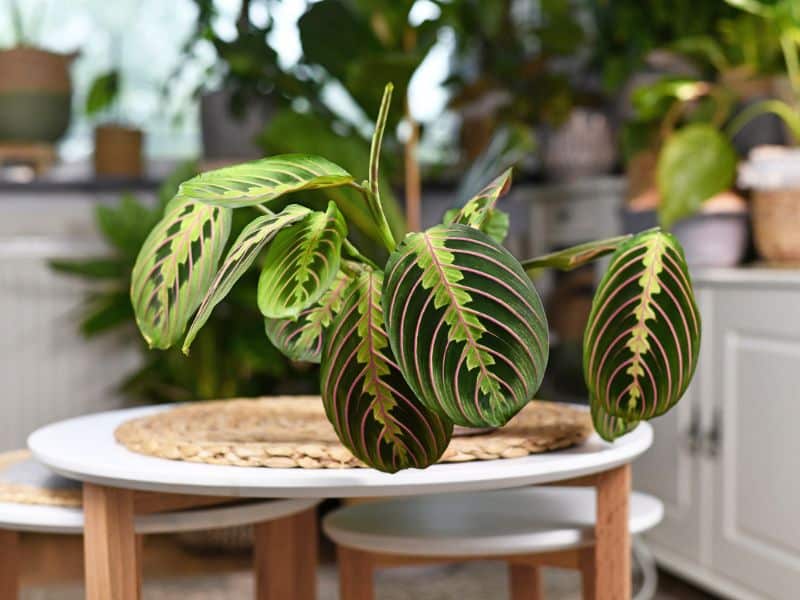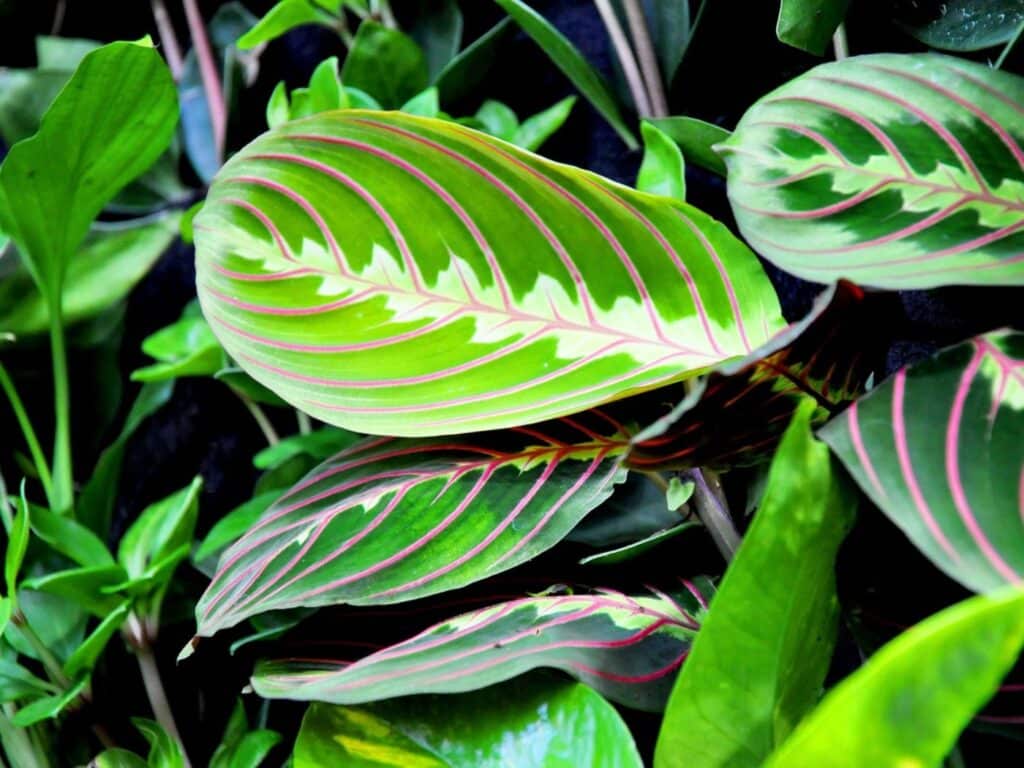You’ve put your heart into cultivating your prayer plant, only to find its vibrant leaves turning yellow and wilting away. Overwatering can be a silent killer for these tropical beauties, often leaving plant enthusiasts puzzled and disheartened.
Understanding the signs of an overwatered prayer plant is the first step to reviving its lush beauty. In this article, we’ll delve into the causes, symptoms, and most importantly, the solutions to overwatering. So, brace yourself to turn things around and breathe new life into your beloved green companion.
Identifying Symptoms of an Overwatered Prayer Plant
Knowing the signs of an overwatered prayer plant is key to saving it from further damage. Here are the critical symptoms to look for:
Yellowing Leaves
When you notice a change in foliage color, keep your calm, it’s a clear symptom. Yellowing leaves on prayer plants are an early sign of overwatering. The plant can’t handle too much water, it gets overwhelmed, causing leaf discoloration. In extreme cases, brown spots may well appear on the leaves, indicating a severe level of overwatering.
Limp or Mushy Stems
Feeling the plant stems can give you the next clue. Normally, prayer plant stems are strong and hold up the leaves well. But, if they’re overwatered, the stems become weak and may well start to droop. An unhealthy stem may feel mushy when touched, this is your sign to change watering habits immediately.
Root Rot Signs
Perhaps the most alarming symptom is root rot. Unfortunately, it’s not as obvious as yellow leaves or limp stems. If you often find puddles of water hanging around the plant’s base days after watering, it’s an alarm for root distress.
Uprooting your prayer plant you may well see dark and soft roots, a surefire sign of overwatering causing rot. It’s recommended to monitor your plant closely for these symptoms to avoid severe damage.
Immediate Actions to Save an Overwatered Prayer Plant

Overwatering can cause serious harm to your prayer plant, but don’t worry! We’ve got some strategies on how to save your verdant companion from wilting away. Now, let’s move promptly to revive your overwatered plant.
Reducing Watering Frequency
First things first, cut back on the number of times you’re watering the plant. Overwatering doesn’t always mean you’re pouring too much water at once—it could mean you’re watering too often.
So, even if you’ve been diligent about not over-saturating the soil, the frequency of your watering could be the problem. Begin by reducing your watering sessions by half. For example, if you’re watering twice a week, try dialing it back to once a week and pay attention to how your plant reacts.
Adjusting Water Quantity
Interestingly, not only does the frequency matter, but the amount you deliver at each watering session does, too. If reducing the frequency doesn’t help, you may well want to adjust the amount of water you’re using. Instead of completely saturating the soil, aim for it to be damp to the touch after watering.
A balance is essential here — the soil should never be sopping wet nor entirely dry. Remember, your prayer plant prefers a humid environment, not one soaked in water.
Long-term Care Strategies for a Recovered Prayer Plant

Once your prayer plant’s rebounded from overwatering, it’s crucial to focus on long-term care. Let’s dig into key strategies that’ll ensure your plant thrives.
Proper Watering Techniques
The secret to healthy prayer plants is keeping a close watch on their watering routine. If the top inch of soil feels dry, it’s time for a drink. Your plant’s needs will change with the seasons, requiring more water in summer and less in winter.
Don’t forget to adjust your watering schedule accordingly. Opt for room-temperature rainwater or distilled water if possible, as these don’t contain harmful chemicals that may accumulate in the soil.
Ideal Soil and Drainage Solutions
The right soil mixture is crucial for your prayer plant’s long-run health. Choose a well-draining soil mix, such as a blend of peat moss, perlite, and vermiculite. This mix ensures excellent aeration, fosters root growth, and helps prevent overwatering.
Additionally, consider a pot with ample drainage holes at the bottom. A proper drainage system lets excess water escape, reducing the chances of root rot in your prayer plant. Remember, the goal is to facilitate a humid environment, not a waterlogged one.
Preventing Future Overwatering Issues
As you’ve recovered your prayer plant from the brink of overwatering damage, it’s now crucial to prevent a recurrence. Let’s look at some practical steps you can take to mitigate future overwatering issues.
Monitoring Soil Moisture
One effective way to minimize the risk of overwatering is by keeping a close eye on your plant’s soil moisture levels. Investing in a moisture meter can be a smart decision. This tool will take the guesswork out of watering, letting you know when the soil has dried out sufficiently for the next watering.
Make a habit of testing different spots around your plant, as moisture can vary within the pot. Remember, it’s better to wait a bit longer between waterings than to water your prayer plant too often.
Using Self-watering Planters
Another strategy for preventing overwatering involves the use of self-watering planters. These planters have a reservoir in the bottom that holds water, allowing the plant to absorb moisture as needed.
Self-watering planters not only help regulate water consumption but also reduce stress on the plant caused by inconsistencies in watering. Be sure to still monitor the soil’s moisture levels regularly, even when using a self-watering planter, to ensure the optimal health of your prayer plant.
Up next:







